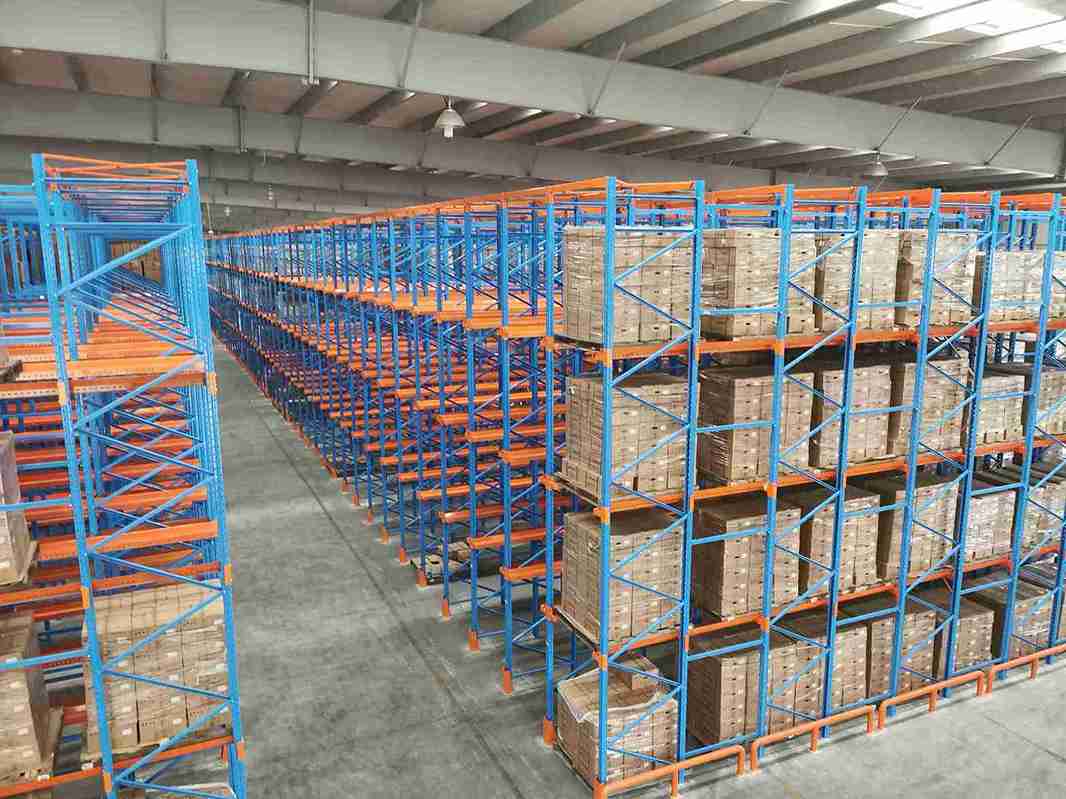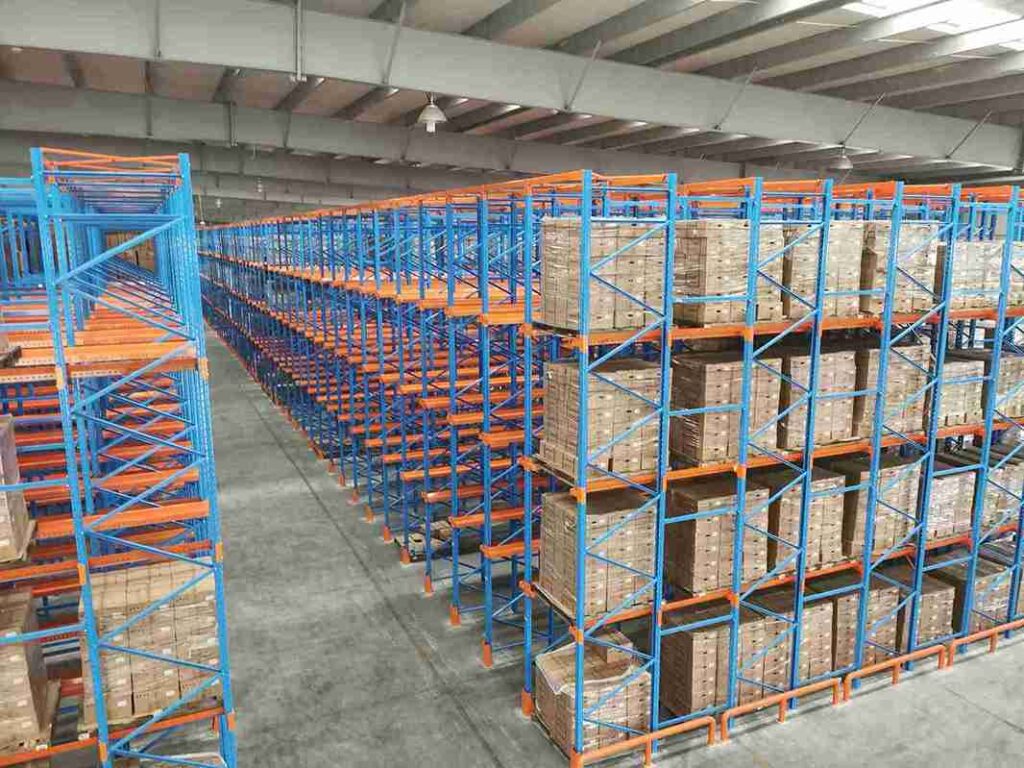📐 "First 50 Enterprise Queries Get Custom 3D Warehouse Design" Plan

Introduction: The Strategic Power of Industrial Racking Warehouse Layout Design
Every high-performing warehouse operates on one fundamental principle: space is money. The right industrial racking warehouse layout doesn’t just store goods—it accelerates operations, reduces labor costs, and prevents costly errors. Companies that master warehouse layout optimization see 20-40% gains in productivity, making it a competitive necessity in logistics, manufacturing, and retail distribution.
This guide dives deep into industrial racking warehouse layout strategies, delivering actionable insights for:
-
Choosing the best racking systems for different inventory types
-
Designing a high-speed warehouse layout that minimizes travel time
-
Integrating automation with industrial racking for next-level efficiency
-
Avoiding costly mistakes in warehouse configuration
-
Future-proofing storage systems for scalability
With real-world examples and data-backed strategies, this resource helps businesses transform chaotic storage into a precision-engineered asset.

Why Industrial Racking Warehouse Layout is the Backbone of Supply Chain Success
1. The Direct Link Between Layout and Profit Margins
A poorly planned industrial racking warehouse layout leads to:
-
30%+ wasted space from inefficient storage
-
15-25% longer pick times due to disorganization
-
Increased product damage from congestion and poor accessibility
Conversely, optimized layouts with strategic industrial racking deliver:
-
40% higher storage density through vertical utilization
-
22% faster order fulfillment (McKinsey Logistics Report)
-
Reduced forklift collisions by 60% with proper aisle planning
2. How Industrial Racking Transforms Warehouse Dynamics
Unlike traditional floor stacking, industrial racking warehouse layouts introduce:
-
Zoned Storage Areas – Grouping fast-moving SKUs near dispatch
-
Dynamic Adjustability – Reconfiguring racks for seasonal peaks
-
Safety Integration – Built-in collision protection and load safeguards
Industrial Racking Systems: Matching Storage Solutions to Warehouse Needs
1. Selective Pallet Racking – The Gold Standard for Accessibility
-
Best for: Warehouses with high SKU variety (e.g., e-commerce, spare parts)
-
Key Advantage: Direct access to every pallet without moving others
-
Layout Tip: Place top-selling items at waist-to-eye level to reduce reach time
2. Drive-In Racking – Maximizing Density for Bulk Storage
-
Best for: Cold storage facilities, beverage distributors
-
Key Advantage: 90% space utilization by eliminating aisles
-
Layout Tip: Reserve for slow-moving, homogeneous products
3. Push Back Racking – The Hybrid Solution
-
Best for: Perishable goods, batch production warehouses
-
Key Advantage: LIFO access while maintaining better selectivity than drive-in
-
Layout Tip: Ideal for 2-4 pallet-deep storage with moderate turnover
4. Mobile Racking – When Every Square Foot Counts
-
Best for: High-value inventory in tight spaces (pharmaceuticals, aerospace)
-
Key Advantage: 60% more storage vs. static systems
-
Layout Tip: Requires reinforced flooring – consult structural engineers
Step-by-Step Industrial Racking Warehouse Layout Optimization
Phase 1: Data-Driven Warehouse Analysis
-
Inventory profiling: Categorize by size, weight, turnover (ABC analysis)
-
Flow mapping: Track pick paths to identify congestion points
-
3D modeling: Use AutoCAD or SketchUp to simulate layouts
Phase 2: Industrial Racking Configuration
-
Aisle Width Planning:
-
12-13 ft for standard forklifts
-
8-9 ft for narrow-aisle reach trucks
-
-
Vertical Utilization:
-
Clear heights > 30 ft? Consider pallet shuttles
-
Low ceilings? Mezzanines double usable space
-
Phase 3: Technology Integration
-
WMS Syncing: Pair barcode scanners with rack locations
-
Automation Ready: Leave expansion space for AMRs/ASRS
Safety & Compliance: Non-Negotiables in Industrial Racking Layouts
1. Load Capacity Engineering
-
Upright frames: Rated for seismic & wind loads in your region
-
Beam deflection: Max L/180 deflection ratio (per RMI standards)
2. OSHA-Approved Layout Features
-
Yellow safety rails at aisle ends
-
Anti-collapse mesh for small-item containment
-
5 ft clearance between sprinklers and top pallets
The Future-Proof Warehouse: Emerging Industrial Racking Trends
1. Robotics-Enabled Racking Systems
-
Auto-guided forklifts in narrow aisles
-
AI-powered slotting that adjusts layouts in real-time
2. Sustainable Racking Innovations
-
Solar-powered LED aisle lighting
-
Recyclable aluminum rack components
Conclusion: Industrial Racking Warehouse Layout as a Profit Multiplier
Superior industrial racking warehouse layout design separates market leaders from struggling operations. By implementing:
✅ Right rack type selection
✅ Data-driven space planning
✅ Safety-focused configurations
Businesses unlock:
🚀 Faster order cycles
💰 Lower operational costs
📈 Scalability for growth
Next Step: Request a free warehouse layout audit from [Your Company] to identify your facility’s hidden potential.
FAQs: Industrial Racking Warehouse Layout Expert Insights
1. How much does industrial racking warehouse layout redesign cost?
Costs range from $15-$50/sqft depending on racking type and automation level. ROI typically <24 months via productivity gains.
2. Can we modify our existing industrial racking layout ourselves?
Minor adjustments are possible, but structural changes require professional engineers to prevent collapse risks.
3. What’s the #1 mistake in warehouse racking layouts?
Ignoring future growth – 73% of warehouses outgrow their original layout within 5 years (Deloitte Logistics Report).
4. How do we calculate needed racking capacity?
Formula:
(Annual Inventory Turns ÷ 365) × (Avg. Pallet Days in Storage) × Safety Buffer (1.2-1.5x)
5. Does industrial racking work for non-palletized goods?
Yes! Bin shelving, cantilever racks, and carton flow systems handle loose items efficiently.
This industrial racking warehouse layout guide equips businesses to outperform competitors in both operations and Google rankings for strategic keywords. For a custom layout blueprint, contact our storage engineers today.




